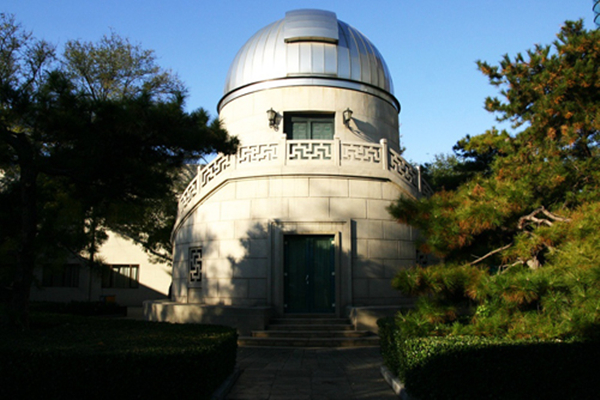Beijing Planetarium


Image from the official website of the Beijing Planetarium. [Photo/bjp.org.cn]
Built in September 1957, the Beijing Planetarium was the first of its kind in China. At regular intervals, 45-minute presentations take the visitor on a trip through the heavens made possible by projectors installed in the center of the hall which faithfully reproduce an image of the starry sky on the inside of the cupola.
History
Covering 20,000 sq m, the Beijing Planetarium opened in 1957 and was the largest large-scale planetarium in Asia at that time. It is now a 5A level tourism site.
Collection
In the courtyard are two astronomical observatories, one of which is equipped with a huge telescope measuring 13 centimeters in diameter through which visitors can observe moons, planets, nebulae and star clusters. On the west side of the planetarium is the astronomy square with further observation devices.
The observatory, built in 1442, displays astronomical instruments of the Ming Dynasty (1368-1644), such as a celestial globe, plane sundial, rotary star dial, and so on. It includes a cluster of buildings such as the Ziwei Hall, Sundial Shadow Hall and other auxiliary structures.
Right below the observatory are three halls which exhibit the astronomical achievements of ancient China as well as epigraphs from Emperor Kangxi and Emperor Qianlong of the Qing Dynasty (1644-1911).
Address: No 138, Xizhimenwai Street, Xicheng District, Beijing
Website: http://eng.bjp.org.cn/ (English)
http://www.bjp.org.cn/ (Chinese)
Open hours: Wednesday to Friday 9:30-15:30
Saturday and Sunday 9:30-16:30
Closed on Mondays and Tuesdays (except on national holidays)
E-mail: bjtwg@126.com
Ticket: Depends on different exhibition halls http://www.bjp.org.cn/col/col104/index.html
Onlie booking: http://ticket.bjp.org.cn/planetarium/ticket.html
MOST POPULAR
- 1 China to continue opening up its mega-market to world: premier
- 2 Policies concerning expats, foreign enterprises in November 2025
- 3 China to enhance convenience for inbound tourism: minister
- 4 Departure tax refund applications surge 285% as inbound tourism rebounds
- 5 China's foreign trade up 3.6% in first 11 months of 2025







